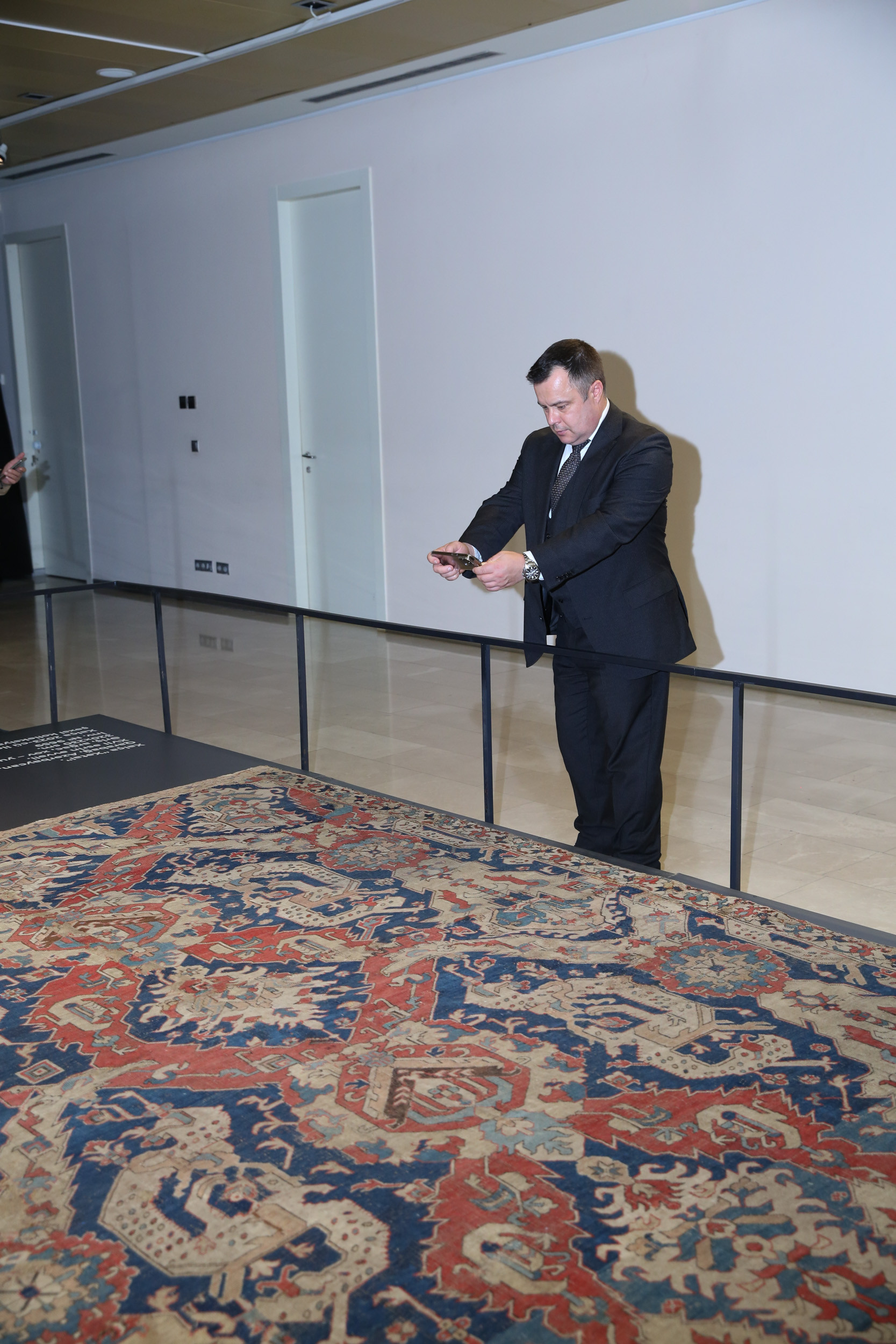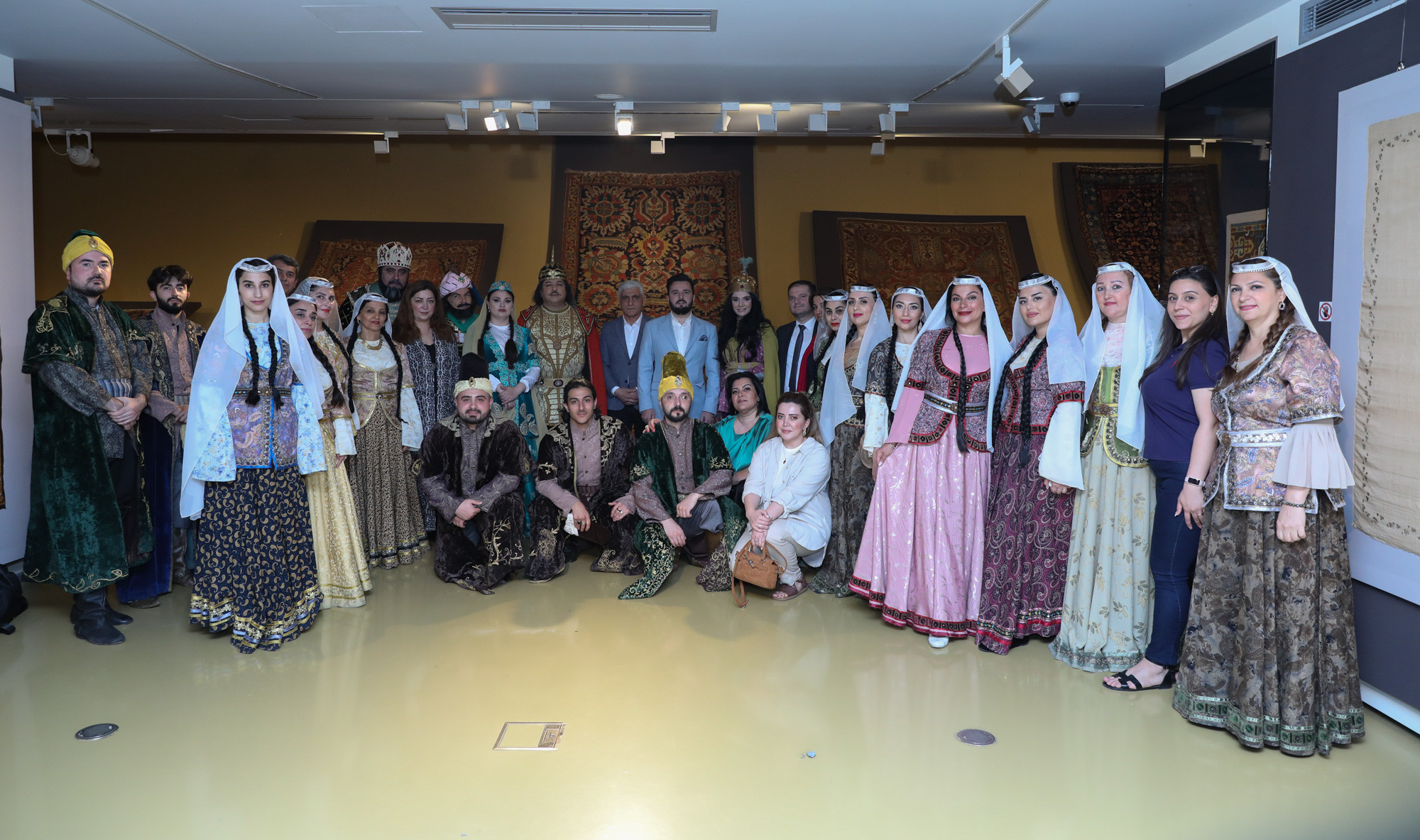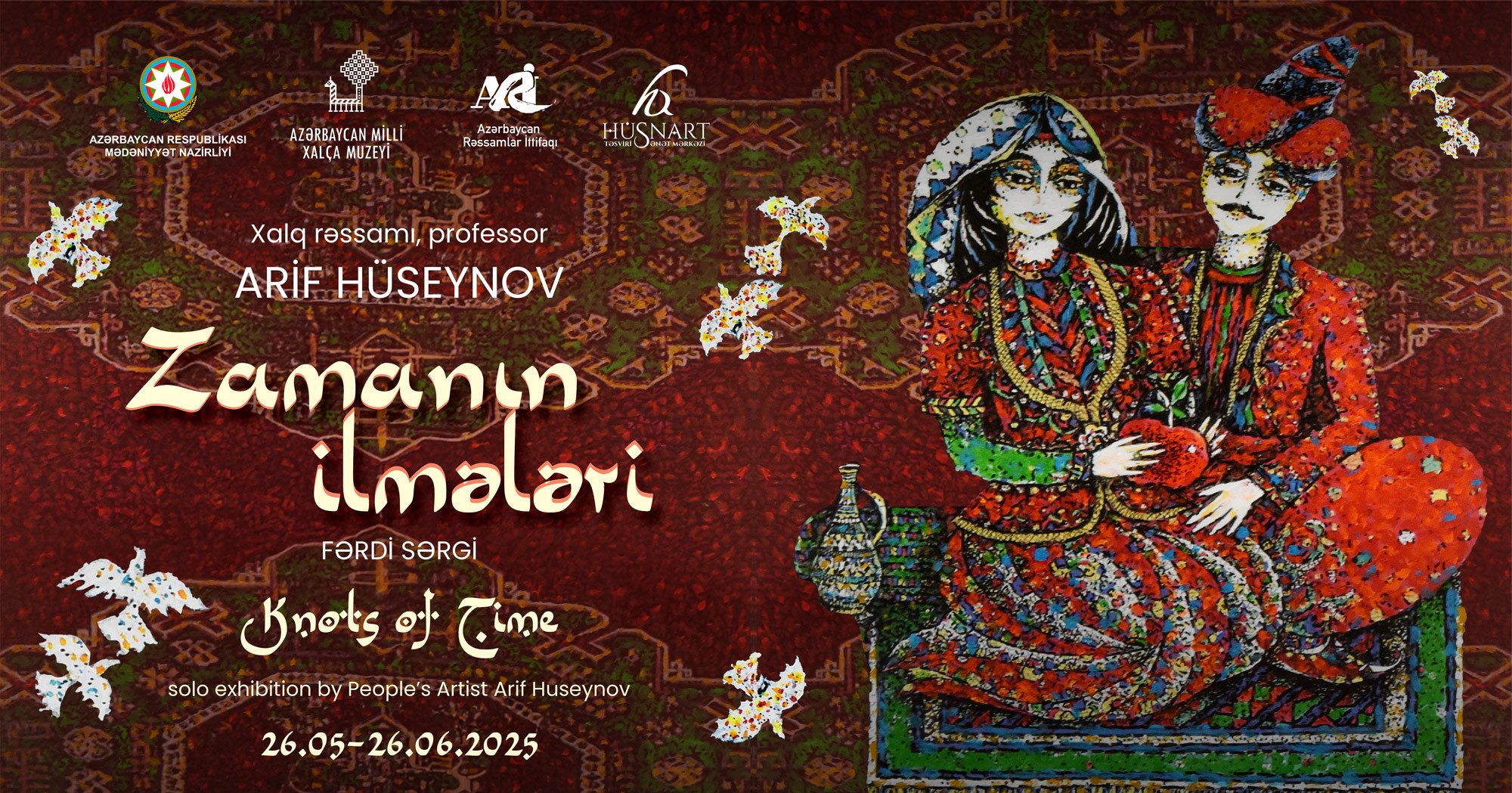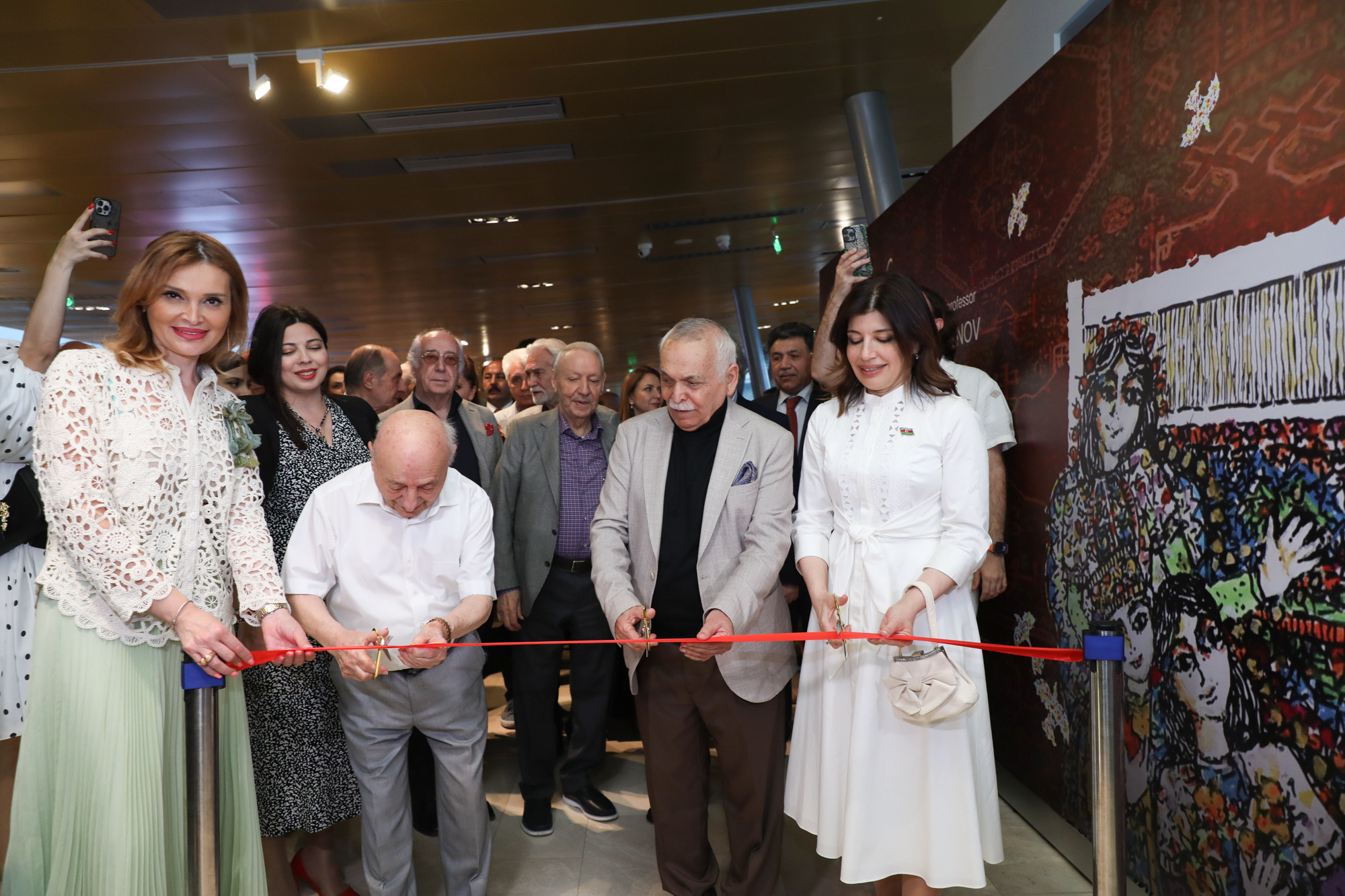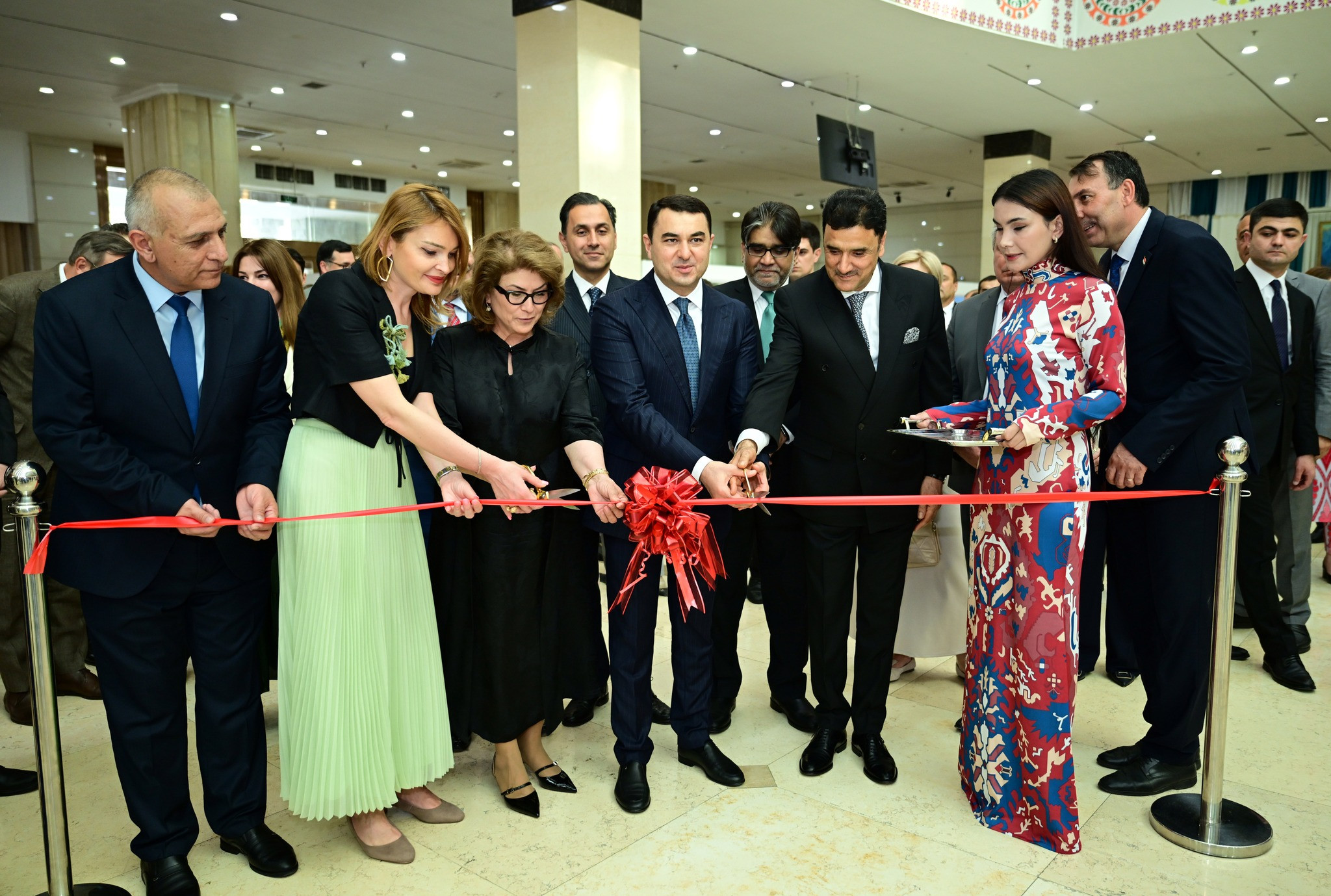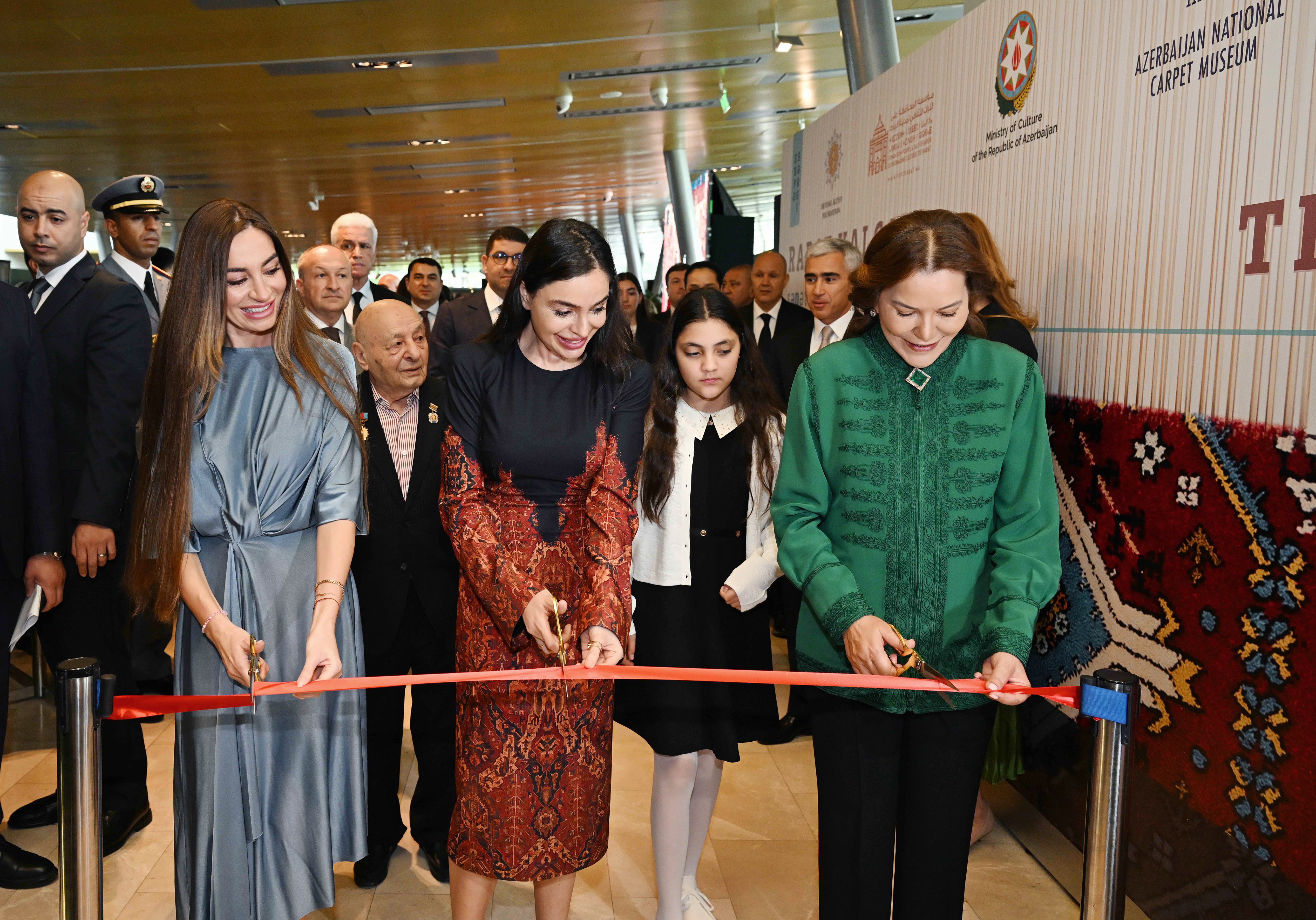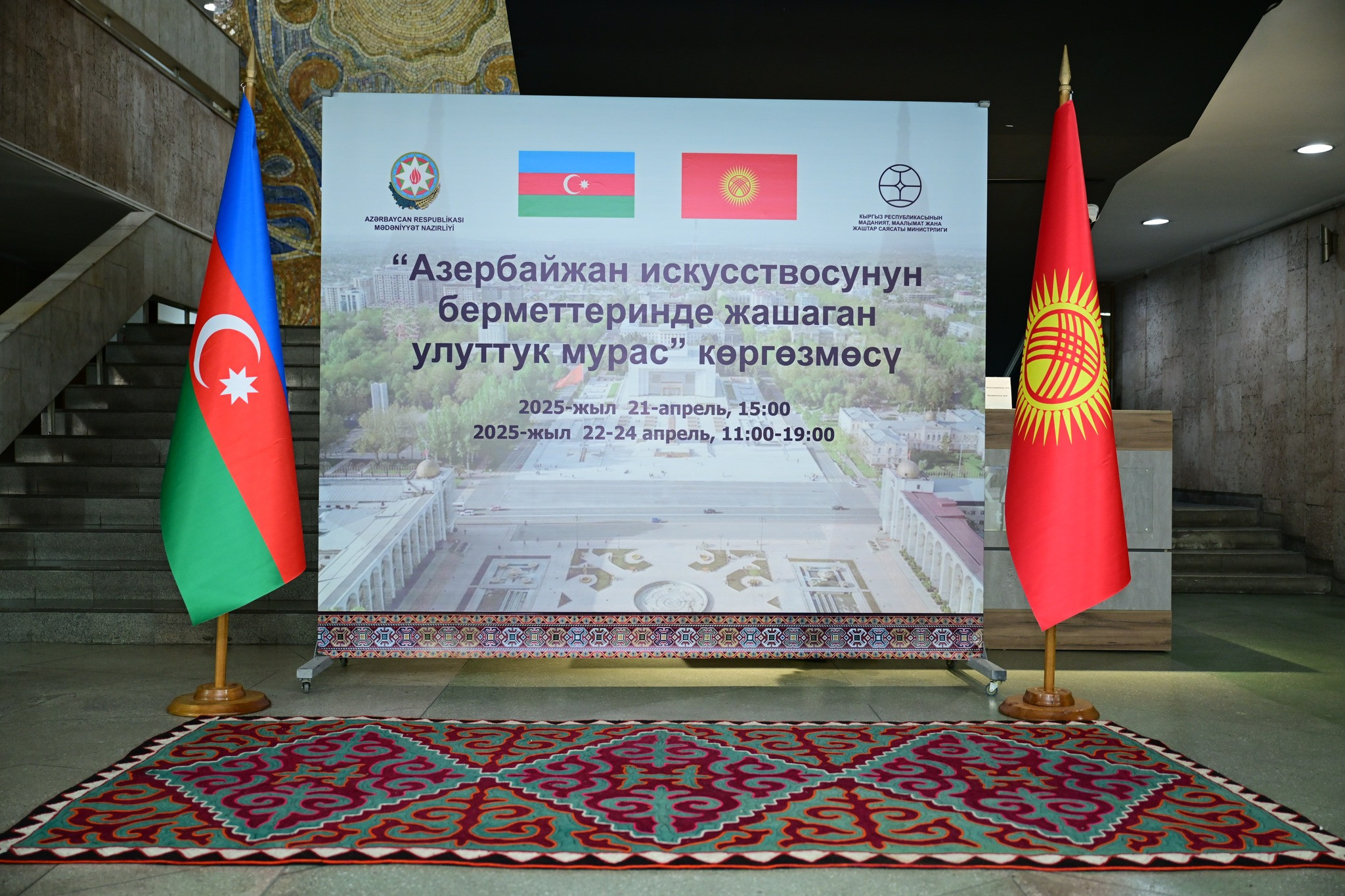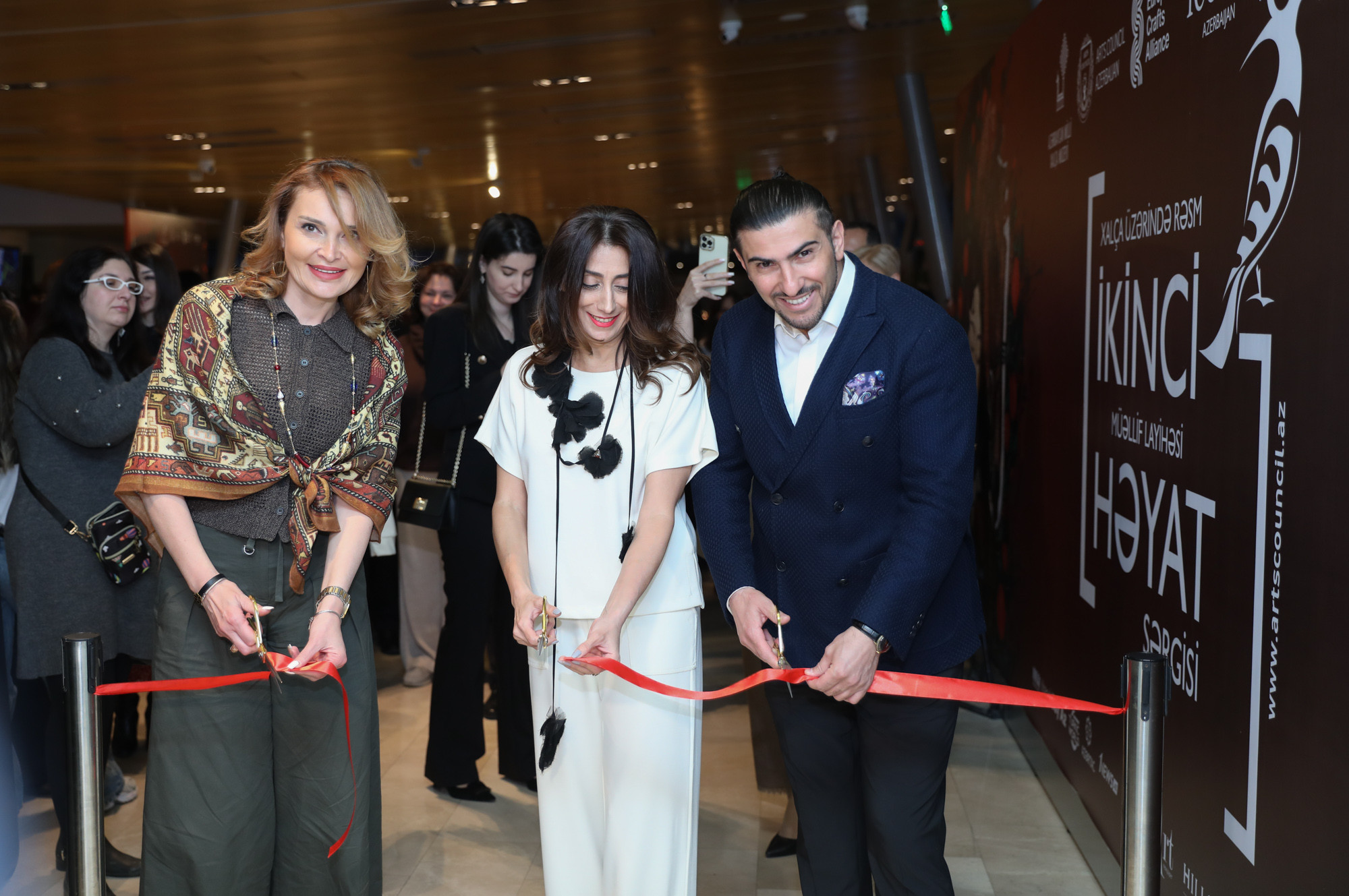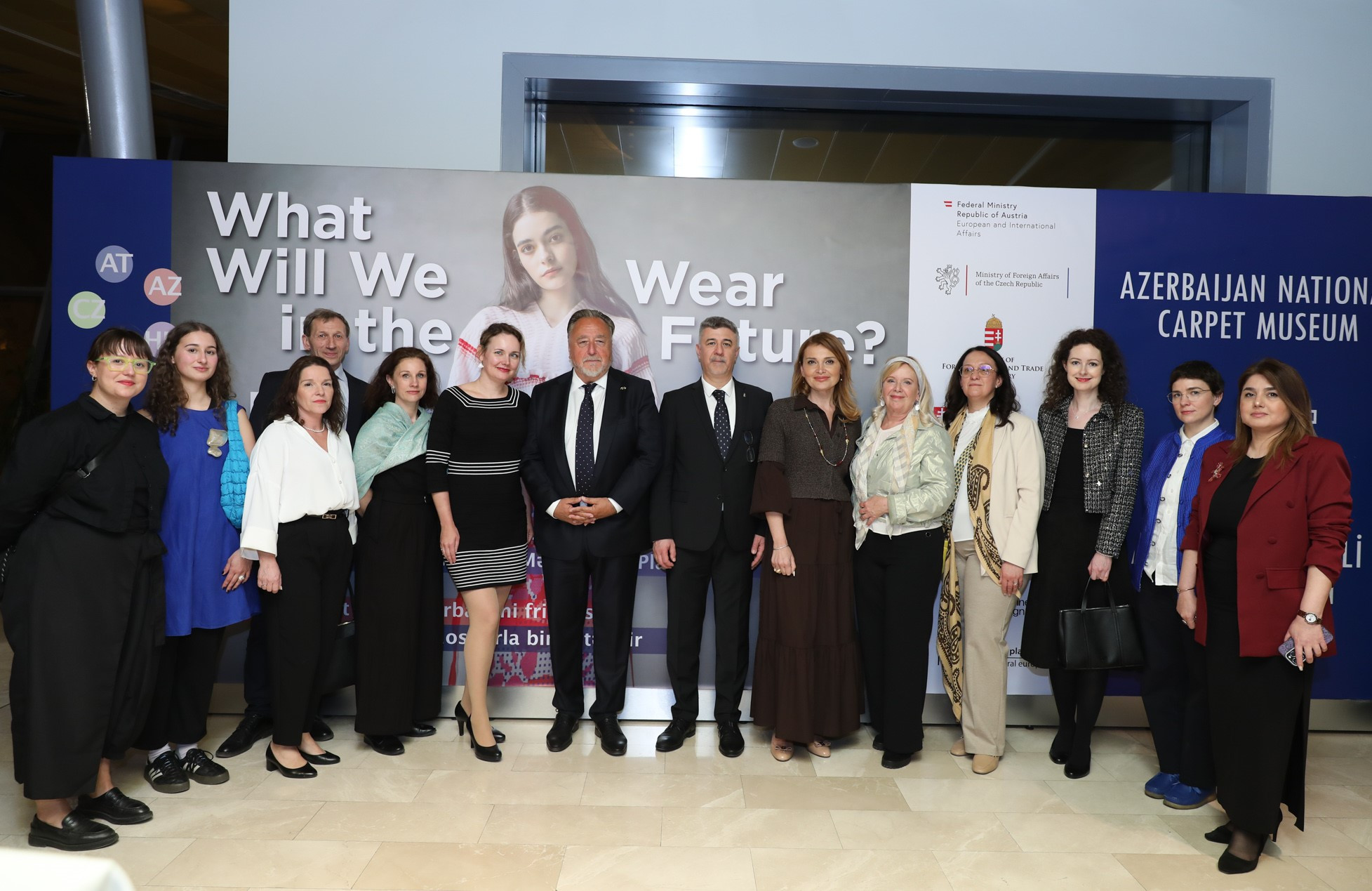The presentation of the 17th century Khatai carpet was held.
On November 14, on the occasion of the 100th anniversary of Heydar Aliyev, the national leader, the presentation of the Khatai carpet of Karabakh, belonging to the early 17th century, purchased from the foreign private collection and returned to its homeland, took place at the Azerbaijan National Carpet Museum.
The event was organized by the Ministry of Culture and the Azerbaijan National Carpet Museum on the occasion of the inclusion of Art of Azerbaijani Carpet Weaving in the UNESCO Representative List of the Intangible Cultural Heritage of Humanity, as well as the birth of the founder of Carpet Museum, outstanding scientist and carpet artist Latif Karimov.
Stylized floral and zoomorphic ornaments typical for Karabakh carpets are reflected in the composition of the new exhibit, which is influenced by the palace carpets of the Safavid era. Between the khatai ornaments crossed sleeves on the carpet with a rich pattern design, there are images of dragons that adorn many monuments of art of the Turkic peoples. Dragon images widely used in Azerbaijani carpet weaving are known as Khatai composition. This name is derived from the name of Khata/Khatai tribe, one of the tribes standing at the ethnogenesis of Azerbaijani people.
It should be noted that Khatai carpets of the 17th century were once woven in Karabakh and exported to foreign countries, and now they are among the pearls of the world's leading museums and private collections.
It should be noted that at the presentation, a small tactile fragment of the new exhibit for visually impaired individuals was also presented by the Traditional Technology Department of the museum.
In recent years, the Azerbaijan National Carpet Museum has made great strides in the preservation and promotion of national heritage samples, as well as in the enrichment of its collections. The return of Karabakh carpets with Khatai composition to our homeland is an important historical and cultural event for the state.

























